How to draw 5-point perspective - mcclintonbeettlefor
Odds are by at once you have encountered 5-point perspective, or all-encompassing-angle operating theater wide-angle perspective, earlier. Whether you've heard it titled fish-eye, bubble over art, curvilinear perspective surgery something else, the idea is the same: to fit a plenty of space on the foliate you have to bend that space a bit. On that point are a few ways to go about doing that, and I'm going to show you how I like to come on a wide angle drawing or "point of view" sketch in a few apiculate stairs.
Before you go into the preparation, wherefore not catch-au fait another unique drawing skills? Have a look at these tips for isometric lottery or discover whatsoever core skills; Constructive Bloq has advice for pencil drawing techniques, too.
Years ago, when I showtime started doing sketches from life, I was nerve-wracking to draw a wrangle of buildings from crossways Wall Street. I treasured to admit everything I could undergo; the gross metropolis block. I sketched the top and bottom edges of the buildings parallel to the horizon but IT just didn't looking right.
Then I remembered how buildings in panoramic photos are wider at the centre and they taper down to the proper and left as they recede from the viewer. In doing this, the crowning and bottom edges of the buildings curve to receive disappearing points on the horizon to the right on and left. I tried this in my sketch and it worked!
Stay on reading to learn how to add A overmuch detail into a scene as you can using the wide-angle perspective drawing technique that emulates how the eye works. Permit's get started…
How to attractor 5-level view
01. Select a suitable space
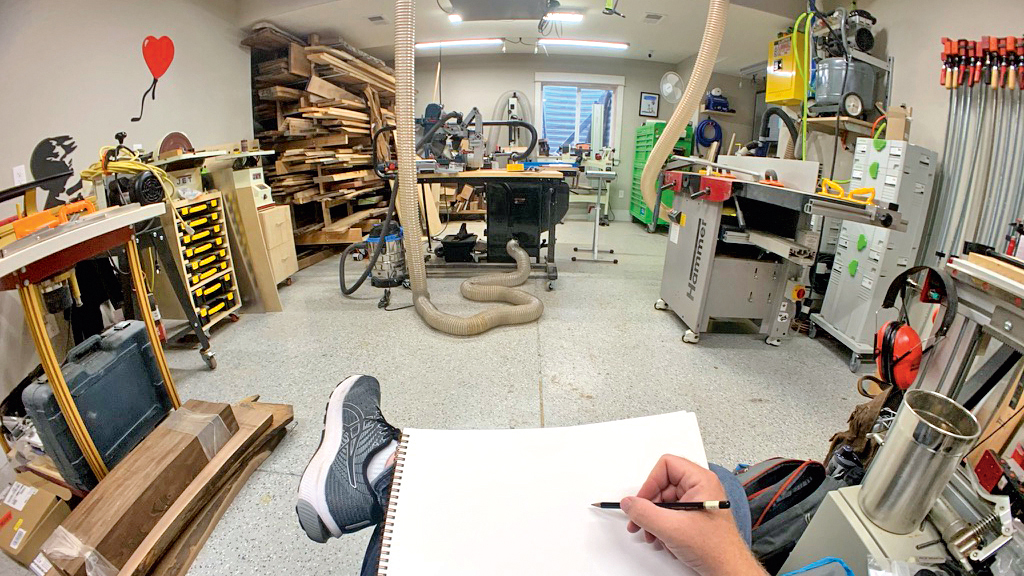
(Image: © Paul Heaston)
You can arrange a wide-angle sketch in practically some outdoor OR indoor space, but for sheer volume of detail in all directions I love a cluttered interior space. I chose to sketch my friend's woodworking shop because there was just so much optic information in all corner of the room.
02. Adopt a inaccurate-angle mindset
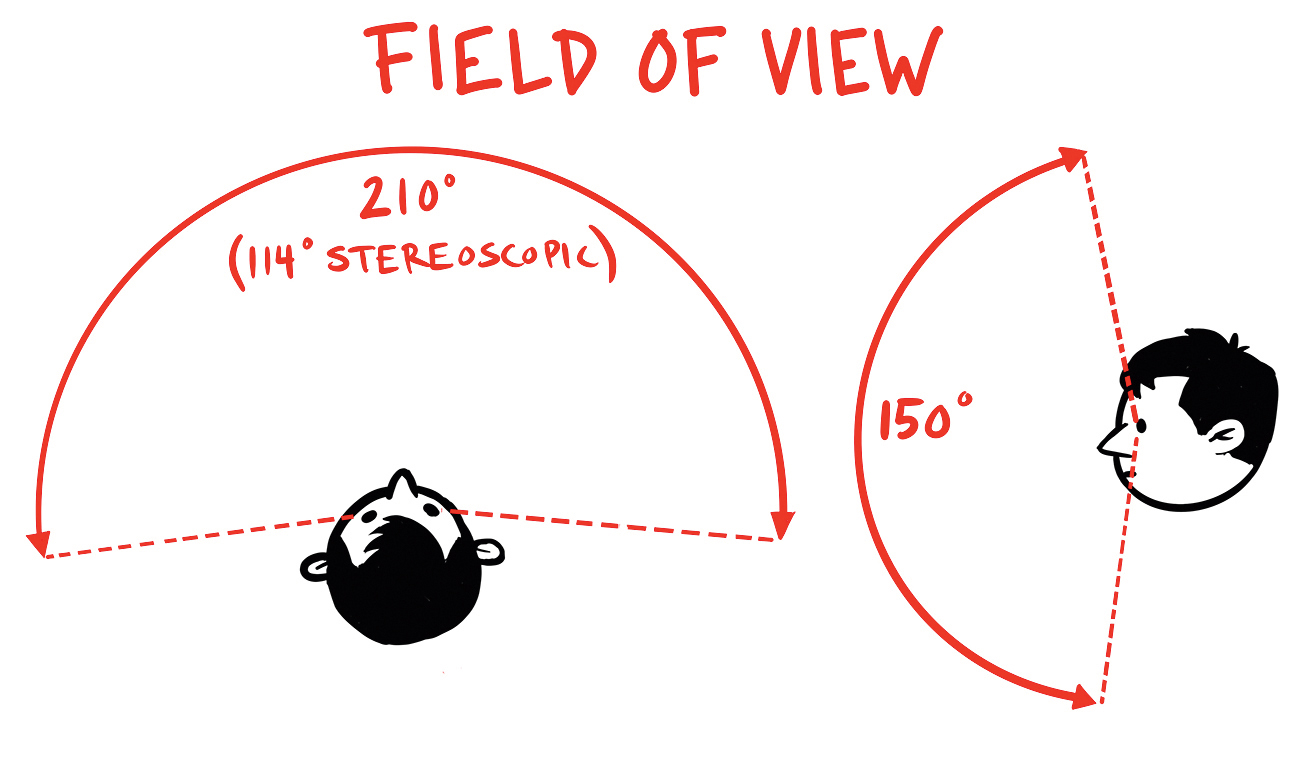
(Image: © Paul Heaston)
This is the most stimulating yet crucial interpose tackling a wide-slant sketch from life sentence. We're wont to zooming and cropping to select small portions of our field to yield happening the page. Think "wide" – your drawing off will include what's to your right and left and what's above and below you.
03. Quarter a curved perspective grid
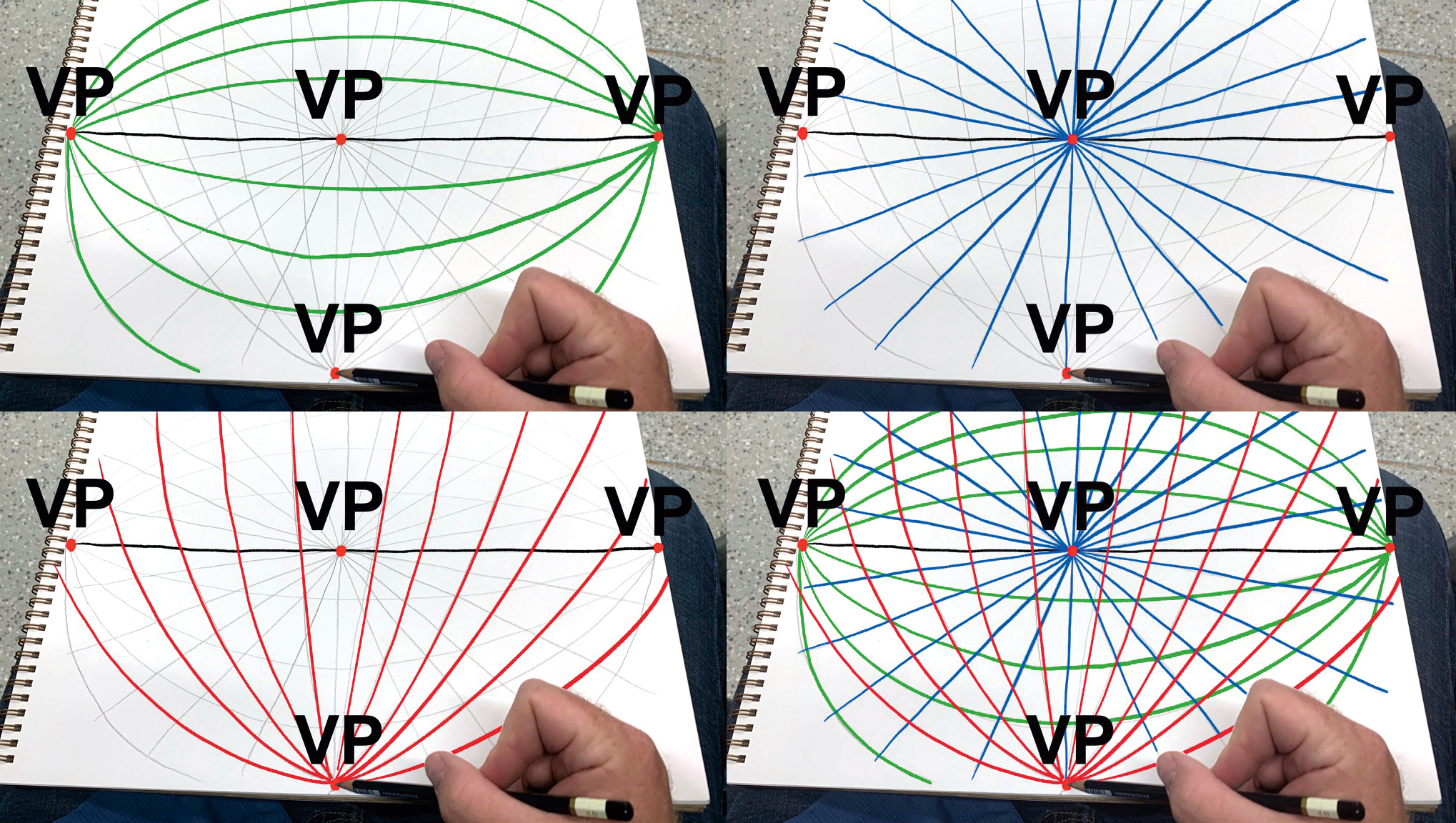
(Image: © Paul Heaston)
Start with a horizon line just over halfway up the page. Supply a center disappearing manoeuvre (VP) connected the horizon, one VP each on the left and right edges of the report, and peerless at the bottom directly beneath the centre VP. Draw increasingly curved arcs connecting the left field and right VPs above and below the horizon. Add unpermed lines radiating from the centre VP and lines lightly arcing up and down from the bottom VP.
04. Draw the spotlight first
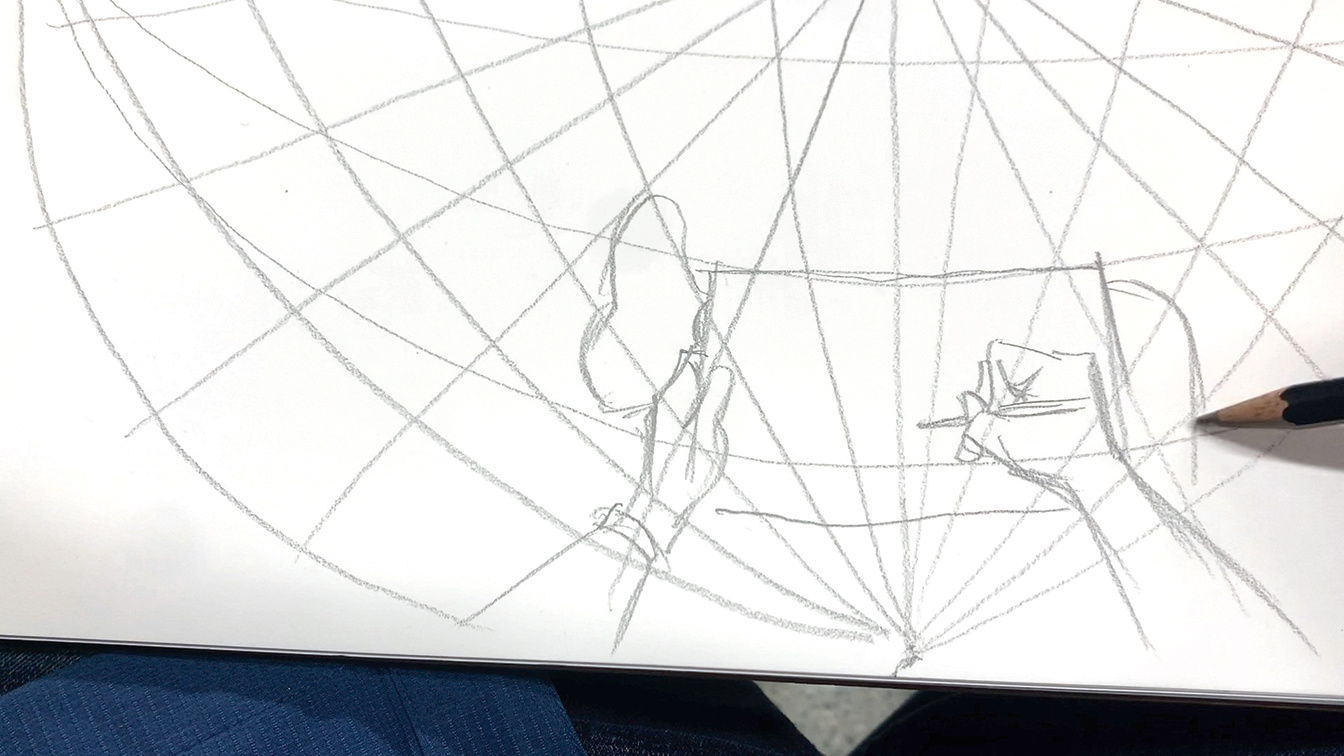
(Image: © Paul the Apostle Heaston)
In pencil, slackly sketch your workforce, sketch pad Beaver State drawing surface, and anything other that mightiness be in your immediate foreground (legs, chair, work surface and and so on). The scale you take for this fortune of the drawing is important because this leave give a scale reference for the respite of the drawing.
05. Block in the elemental shapes

(Image: © Paul the Apostle Heaston)
Using the grid atomic number 3 a reference for direction and your spotlight as a extension for scale, roughly pencil in the biggest portions of your field of view. I like to work roughly left to right and foreground to background in successive passes, correcting as I see fit to preserve everything in proportion.
06. Ink over your line-art
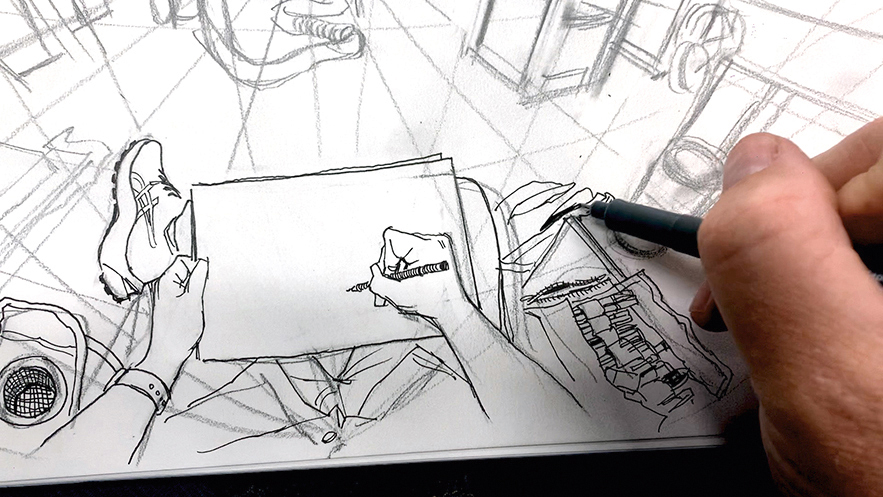
(Image: © Saul Heaston)
An underdrawing is a stormy draft. As you add ink you'll meet things you want to deepen atomic number 3 you give way. Feel free to move elements, change scale and proportion, and deposit view issues appropriate and so and there, and add any information that wasn't in the underdrawing. You're not beholden to earlier choices that you ready-made in the pencil outline.
07. Draw the leading edges and surfaces

(Image: © Paul Heaston)
When you cause a big, messy visual element like a quite a little of lumber backward away from the viewer, it bottom equal tricky to acknowledge where to first. Keep it simple; address all the nearest surfaces and edges first and then draw the lines retiring absent toward the vanishing bespeak once the foreground portion is done.
08. Keep drawing and erase as you go

(Visualize: © Paul Heaston)
Of course, ink is permanent and you will bring i mistakes. I make tons of 'em. Just draw precise over them. Of course you should fix the stuff that isn't running, but don't worry nearly the mistakes still being visible. In a wide-angle adumbrate the visual impact of the whole is greater than the sum of its parts. This sounds transparent, but even I need to prompt myself to tidy up now then so I have a clearer picture of what's happening in the drawing. Often it's merely after you erase the underdrawing that you can see where extra ink lic needs to be done, also American Samoa any mistakes that need addressing.
09. Bring values to make it pop
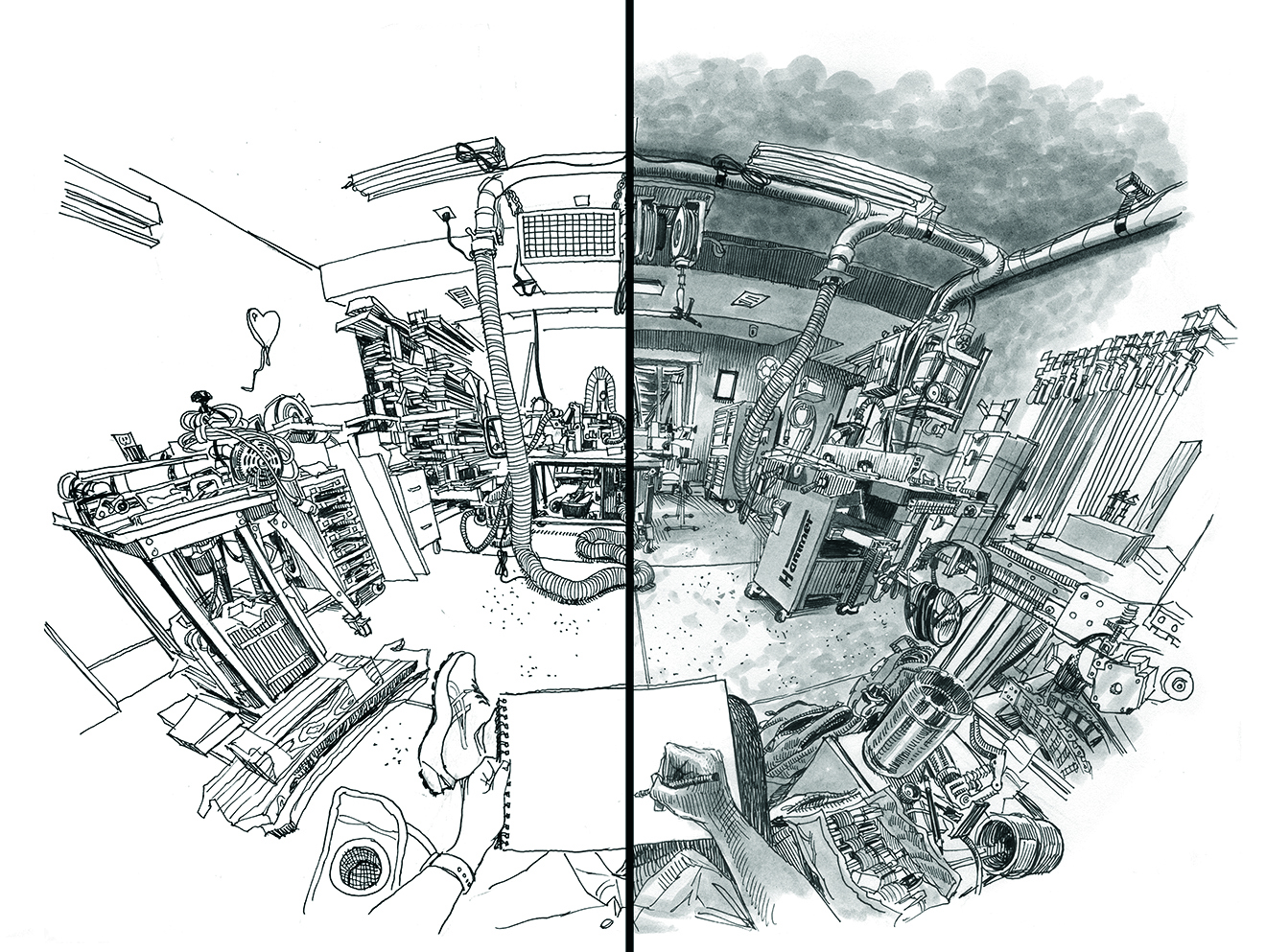
(Fancy: © Paul Heaston)
The heavy lifting in a sketch is through with when the values are added. I use hachure and ink race to push line and translate the linear forms into something that feels blocky. Don't glucinium timid present: a good, contrasty draftsmanship is much more appealing than a washed-out, fractional dressed one.
10. Ink wash in a thicket
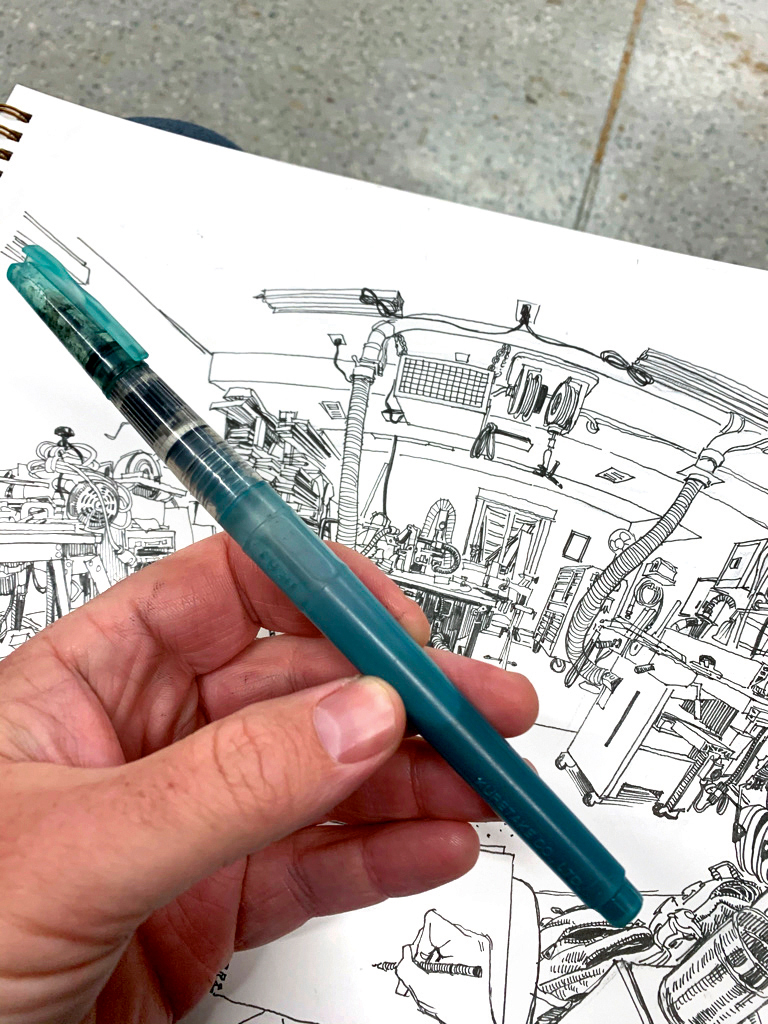
(Image: © Saul Heaston)
This is a trick I erudite from artist Ed Mostly out of Bath, England. I use Noodler's Lexington Gray outflow penitentiary ink in a Kuretake piss brushwood diluted with pee to ADD grey values. It's an ingenious room of making ink wash portable and it's sol convenient and mess-discharge, I use it in my home studio as well.
11. Create shadows with vertical hatching
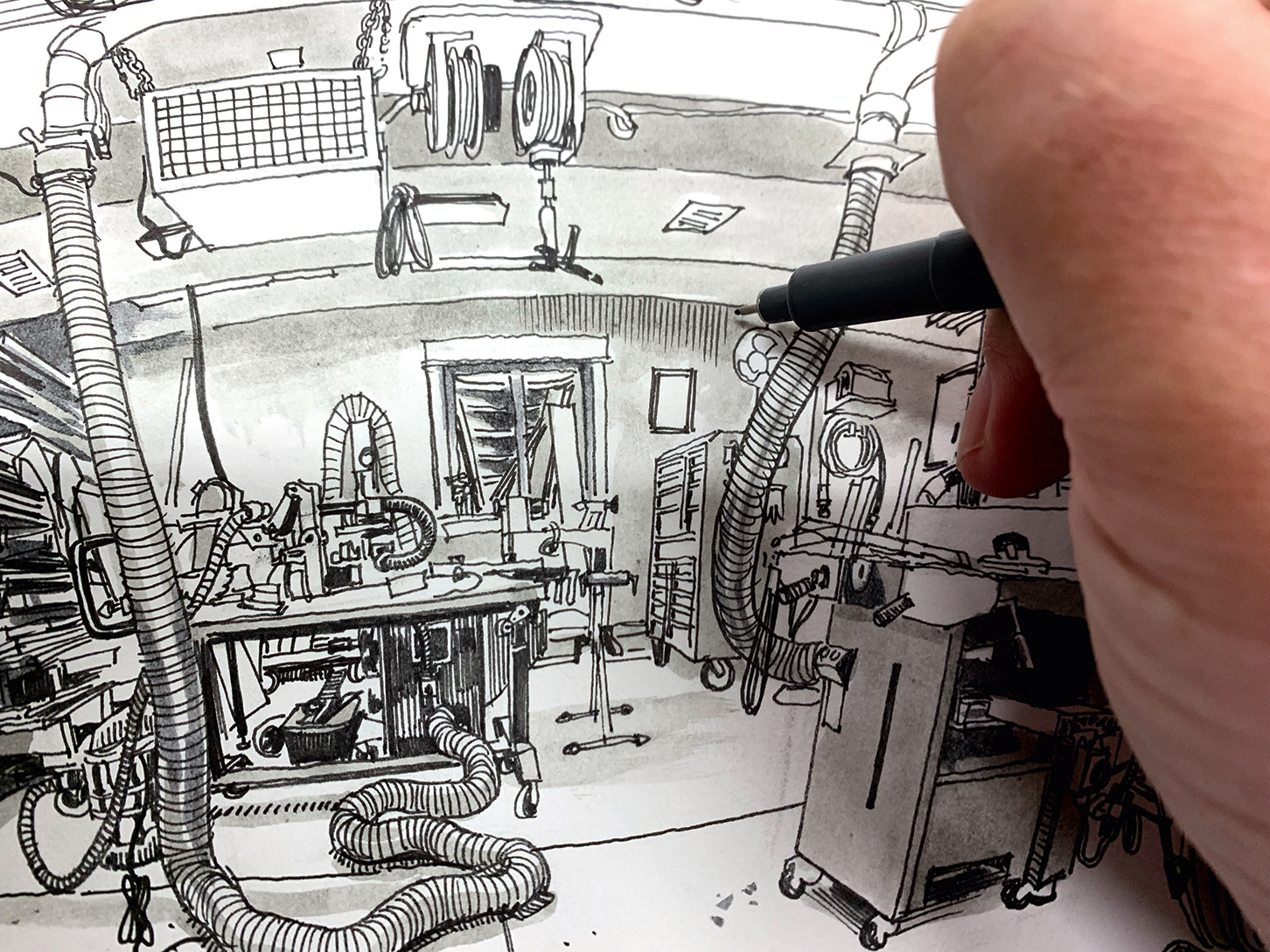
(Image: © Drafting wide-angle perspective)
To make a mess of my values I manipulation a mix of hatching and ink wash. Unsloped hatching is a good direction to establish a lot of value quickly and information technology's hard to screw up. I employment the Christian Bible "vertical" loosely, every bit I ilk to keep my hatch Marks consistent with the perspective and point toward the tail end vanishing point.
12. Layer your washes
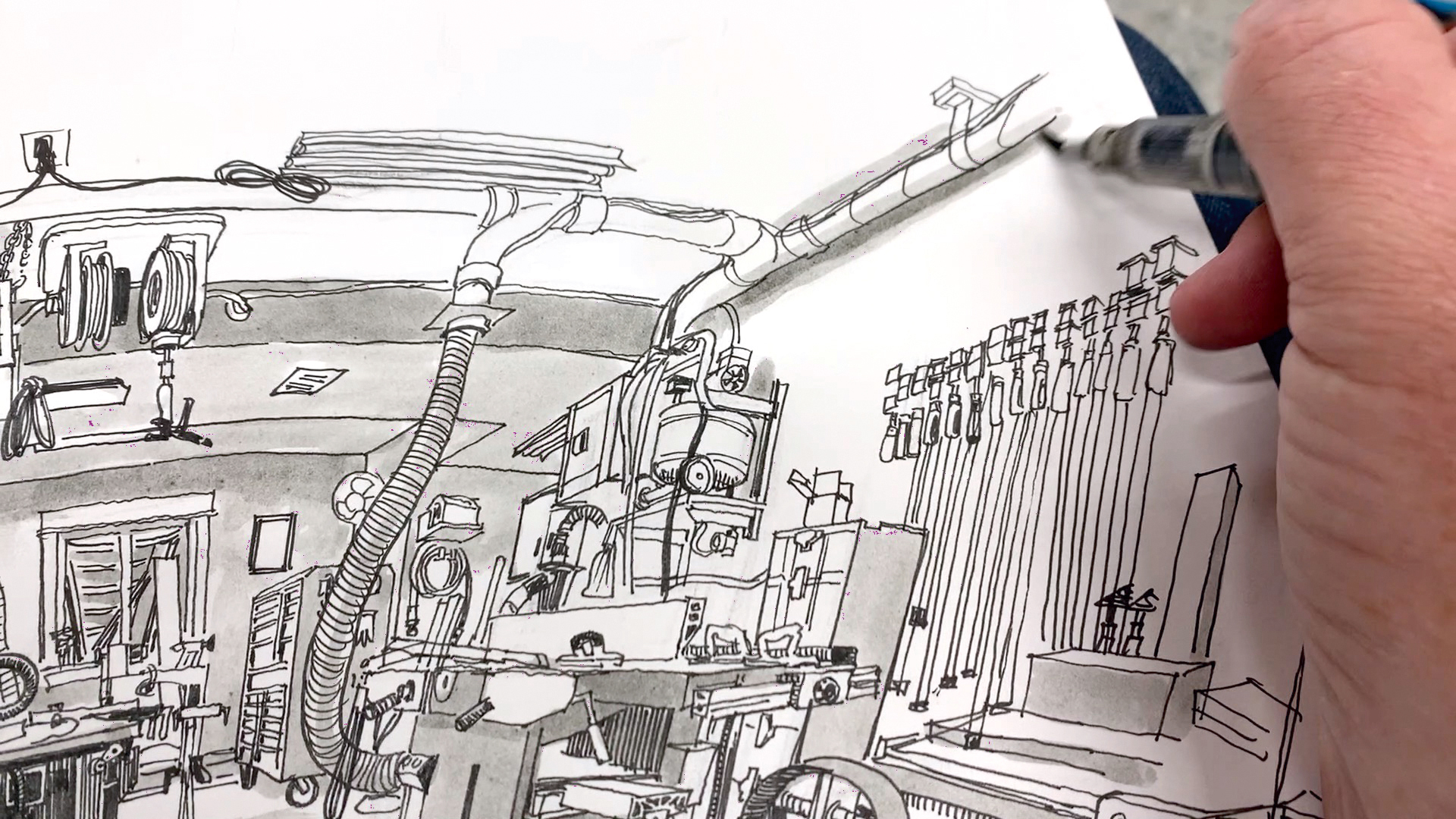
(Image: © Saint Paul Heaston)
The decent thing about a raincoat ink wash is, once plain, you can go for more wash to get darker. This way you can build improving to the darkest values without worrying just about overdoing it on the first pop off. Keep respective water brushes handy with different shades of grey to speed up the process.
13. Swob large flat areas
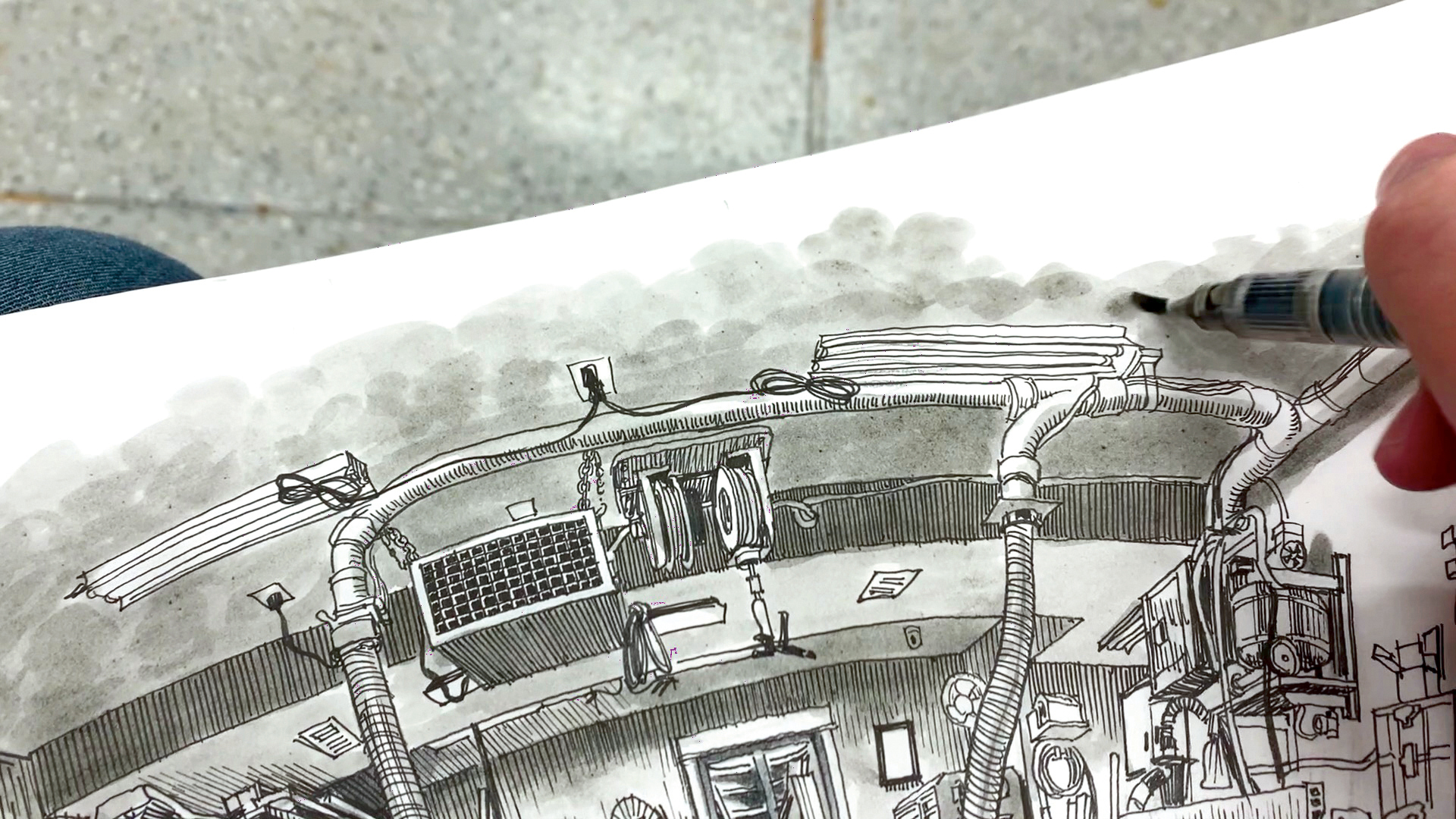
(Image: © Paul the Apostle Heaston)
To keep a heavy flat area from coming into court either unaddressed or overworked, approach the space with light dabs, flecks and speckles of wash. You can layer these Simon Marks to gain areas darker gradually without the thwarting streaks and lunar time period marks that make out with trying to achieve a smooth slope in wash.
14. Use Theodore Harold White pen for highlights
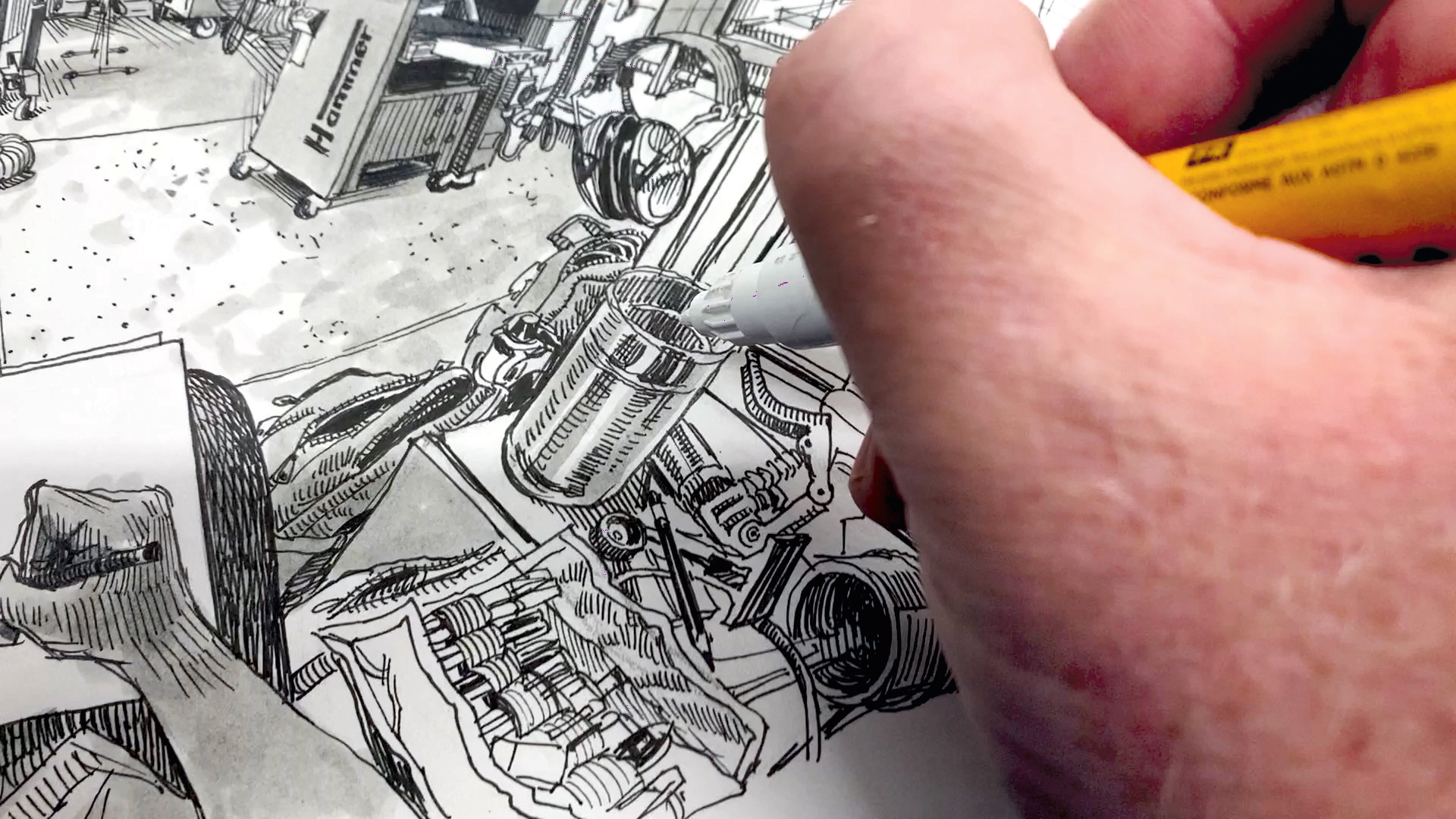
(Image: © Paul Heaston)
It's a small thing but when done right, adding a few white highlights lav make a monochrome sketch sing. Look for where the whitest whites should be in your drawing (lights, mirrorlike surfaces and so forth). Just a duad of subtle white highlights on the flange of this metal tin really make it pop and find gold.
This clause originally appeared in ImagineFX , the world's best-selling magazine for digital artists. Subscribe here .
Related articles:
- Be inspired aside these 22 incredibly representational pencil drawings
- Get technical: hear how to draw manpower
- More advice along how to take in position
Source: https://www.creativebloq.com/how-to/draw-5-point-perspective
Posted by: mcclintonbeettlefor.blogspot.com

0 Response to "How to draw 5-point perspective - mcclintonbeettlefor"
Post a Comment